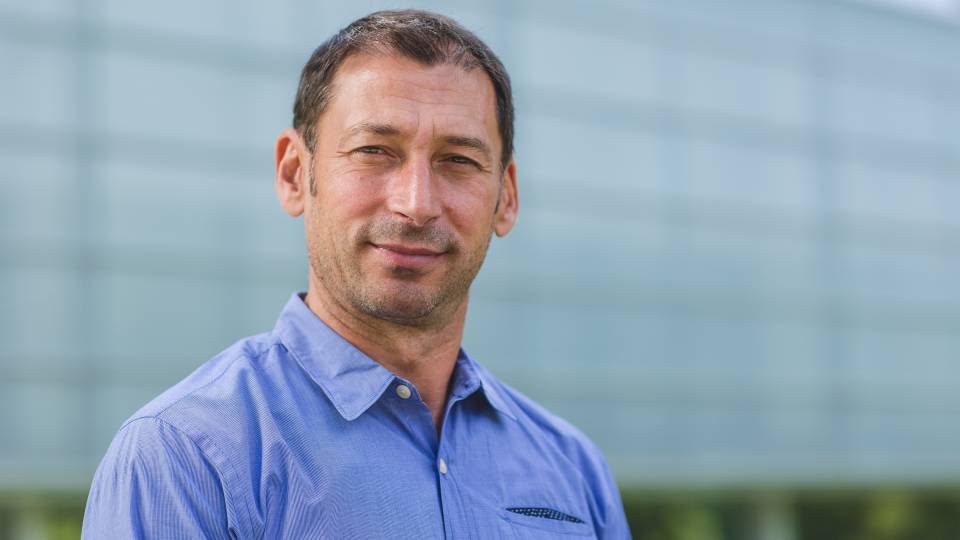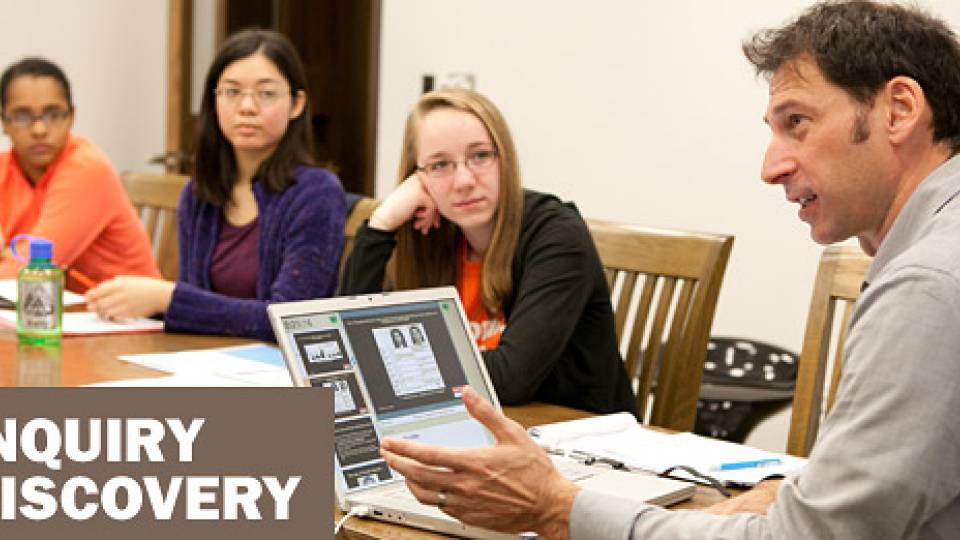A split-second glance at two candidates' faces is often enough to determine which one will win an election, according to a Princeton University study.
Princeton psychologist Alexander Todorov has demonstrated that quick facial judgments can accurately predict real-world election returns. Todorov has taken some of his previous research that showed that people unconsciously judge the competence of an unfamiliar face within a tenth of a second, and he has moved it to the political arena. His lab tests show that a rapid appraisal of the relative competence of two candidates' faces was sufficient to predict the winner in about 70 percent of the races for U.S. senator and state governor in the 2006 elections.
"We never told our test subjects they were looking at candidates for political office -- we only asked them to make a gut reaction response as to which unfamiliar face appeared more competent," said Todorov, an assistant professor of psychology and public affairs. "The findings suggest that fast, unreflective judgments based on a candidate's face can affect voting decisions."
Todorov and Charles Ballew, an undergraduate psychology major who graduated from Princeton in 2006, conducted three experiments in which several dozen participants had to make snap judgments about faces. Participants were shown a series of photos, each containing a pair of faces, and asked to choose, based purely on gut feeling, which face they felt displayed more competence. The differences among the experiments largely concerned the amounts of time an observer was allowed to view the faces – as brief as a tenth of a second or longer -- and to pass judgment afterward.
What was unknown to the participants in the third experiment was that the image pairs were actually the photographs of the two frontrunner candidates for a major election being held somewhere in the United States during the time of the experiment in late 2006. The races were either for state governor or for a seat in the U.S. Senate. In cases where an observer recognized either of the two faces, the researchers removed the selection from the data.
Two weeks later elections were held, and the researchers compared the competency judgments with the election results. They found that the judgments predicted the winners in 72.4 percent of the senatorial races and 68.6 percent of the gubernatorial races.
"This means that with a quick look at two photos, you have a great chance of predicting who will win," Todorov said. "Voters are not that rational, after all. So maybe we have to consider that when we elect our politicians."
Todorov's paper on the findings, written with Ballew, appears in the Oct. 22 issue of the journal Proceedings of the National Academy of Sciences. The paper has inspired researchers elsewhere to re-examine their assumptions about visual images and their effect on decision-making among the public.
"Political scientists have spent 50 years documenting only modest and conditional effects of the media on voting behavior, but Todorov's research suggests we may have been looking in the wrong place," said Chappell Lawson, an associate professor of political science at the Massachusetts Institute of Technology. "Most of these previous studies have relied on transcripts or printed records of what the media say, with much less attention to visual images."
Lawson, who called Todorov's work "pioneering and seminal," added that some of his co-authored work with MIT's Gabriel Lenz corroborates the new findings. Their research shows that American students could predict the outcome of elections in Mexico based on the same gut reactions.
"The findings surprised us, because Mexican politicians often emphasize very different aspects of their appearance -- for instance, by sporting beards and mustaches, which American political figures avoid. But Americans could still pick out the Mexican winners. Our data show effects at least as strong as those Todorov's team found."
Political scientists, Todorov said, are likely to be most interested in his findings, primarily because they will want to identify which voters are most strongly influenced.
"It's still unclear how these effects operate in the real world," he said. "Not every voter is going to be affected. Obviously, some people vote according to their values, but many others are uninformed about candidates' policy decisions. So we need to do the hard work to find out."
AbstractPredicting political elections from rapid and unreflective face judgments
Charles C. Ballew II and Alexander Todorov
Here we show that rapid judgments of competence based solely on the facial appearance of candidates predicted the outcomes of gubernatorial elections, the most important elections in the United States next to the presidential elections. In all experiments, participants were presented with the faces of the winner and the runner-up and asked to decide who is more competent. To ensure that competence judgments were based solely on facial appearance and not on prior person knowledge, judgments for races in which the participant recognized any of the faces were excluded from all analyses. Predictions were as accurate after a 100-ms exposure to the faces of the winner and the runner-up as exposure after 250 ms and unlimited time exposure (Experiment 1). Asking participants to deliberate and make a good judgment dramatically increased the response times and reduced the predictive accuracy of judgments relative to both judgments made after 250 ms of exposure to the faces and judgments made within a response deadline of 2 s (Experiment 2). Finally, competence judgments collected before the elections in 2006 predicted 68.6% of the gubernatorial races and 72.4% of the Senate races (Experiment 3). These effects were independent of the incumbency status of the candidates. The findings suggest that rapid, unreflective judgments of competence from faces can affect voting decisions.
Key words: face perception, social judgments, voting decisions

